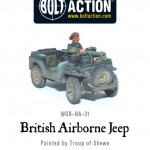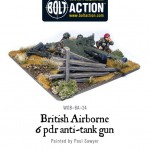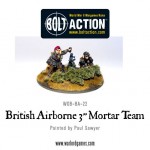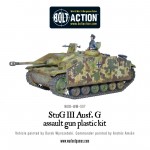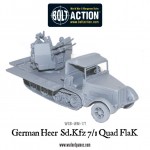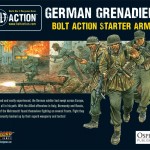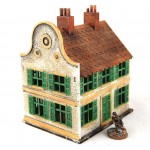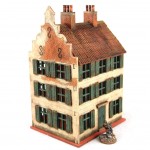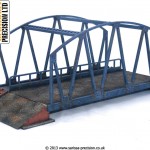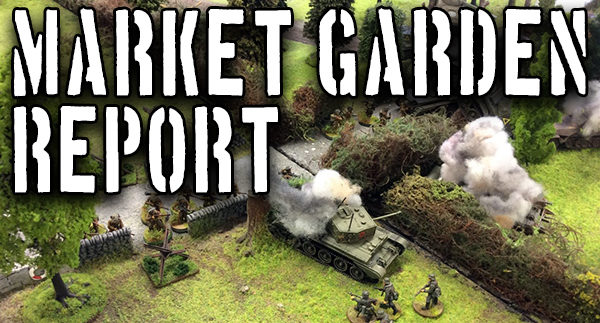
Hey guys! Jamie here, we really love seeing your awesome games online in the Facebook groups!
I saw this awesome Market Garden themed Bolt Action Game from Southend-on-Sea Wargames; posted by Russell Wright with photos from Dean Bailey and Ian Day. I had to contact them to ask for more info…
They kindly sent me the below write up with some awesome images!
If you are running large themed games like this, feel free to send an email with some cool action shots: info@warlordgames.com
By Gilles Daquin
Southend on Sea Wargames Group (SSWG.co.uk) had spent several weeks setting up tables and scenery for a large scale scenario on June 10th. The plan was to refight as much of operation Market Garden as their tables would allow, which had been formed into a horseshoe shape with left and right sides dividend by the Waal River at Nijmegen. They had run a couple of test games to tweak the rules to ensure such a large game could be completed within 8 hours, with around 12 turns taken. This led them to use fourteen 6ft by 4 ft boards with: four bridges to secure, three urban conurbations to clear and Hells Highway which from board edge at the starting point to Arnhem bridge was 44 feet long (528 inches).
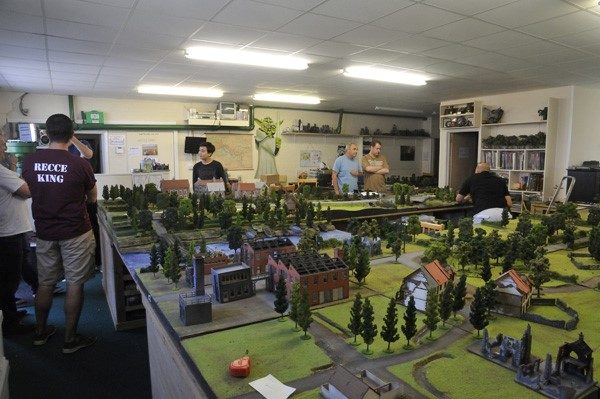
The battlefield pre set up as seen from North of Nijmegen and the Waal river. Arnhem lies to the right, out of sight, Grave is in the background far left corner.
Across this board would be ranged six Allied army formations manned by seven players facing off against six German formations each manned by one player. Most formations equated roughly to a Bolt Action platoon each, with on average twelve order dice. 30th Corps, with potentially 28 order dice, was managed in two columns by two players.
In total at game start (with the Polish Brigade yet to arrive and some German reinforcements not in place) the game started with around 240 Allied soldiers and 28 tanks/ armoured cars facing off against 180 German infantry and a dozen tanks and armoured cars. Eventually, some 500 infantry and 60 AFVs would participate (plus lots of AT and AA).
The game was also interesting in that it completely ignored points costs and the army formations were based around what forces actually appeared during this campaign. For those of you interested though, SSWG estimate that with air strikes and transports etc included, the Allies had around 14,000 points against 10,500 for the Germans (their tanks are expensive!).
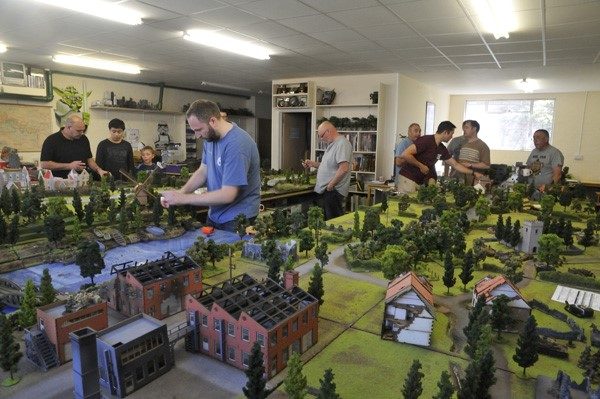
Arnhem visible to the north, a long way from 30th Corps.
The game had an umpire overseeing events, managing dice drawing, settling rules queries and keeping everyone to schedule. Set up begun from 9am (with most formations prepared on trays the night before for deployment). The game began at 10am and ended at 5pm (with a lunch break taken at 12.30pm). This allowed for around six hours of playing time and SSWG had calculated (with test games) that they could average thirty minutes a turn.
In order to achieve this rate of action, each side was allocated 42 order dice each (30th Corps players had a bonus 3 extra) in total, which were stuck in a big tub. The dice bag then received two or three dice for every player (depending on the size of their force for a total of c. 16 on each side) and every time a player had their dice drawn they got to use three order dice. This meant that not all units could be moved every turn as the order dice would run out, thus commanders would have to prioritise them. The Group also drew three dice for these players at a time, so that three players were active simultaneously, with the umpire ensuring this was one in each area of the tables to reduce overlap in actions.
Amongst the house rules for the game, the most notable change was transports. In order to reduce order dice being used and to stop players zooming empty transports all over the place, transports did not get an order dice and would only activate when they had passengers (similar in many ways to version one of Bolt Action).
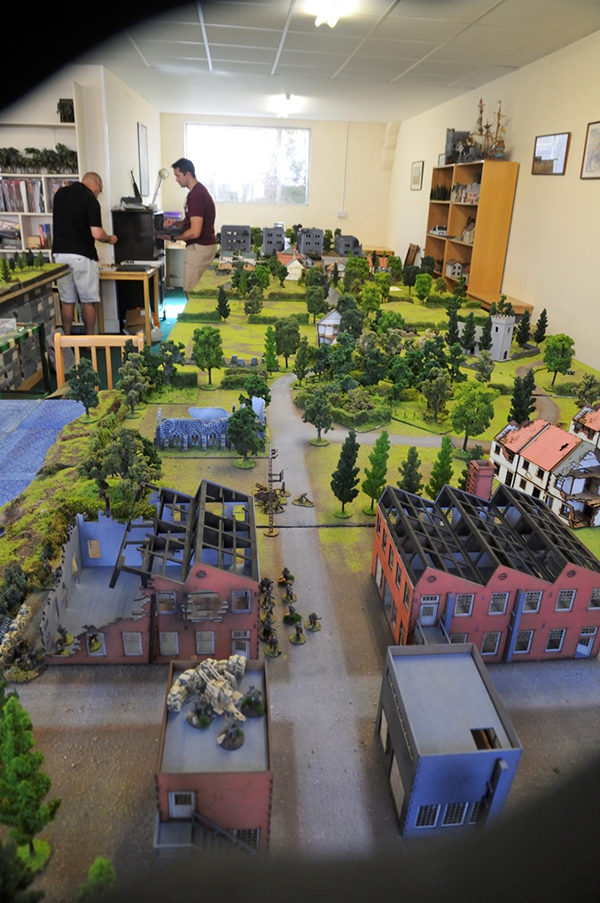
Even once the Waal was crossed, Nijmegen to Arnhem was going to be a long trip. Note the Quad cannon on the roof at the bottom of the photo which was to cause so many problems for the US Airborne.
The game naturally split into three main zones of activity, being the 30th Corps break out and actions south of and around Grave; the US airborne assault on Nijmegen and of course Arnhem itself.
Garden- opening stages (turns 1-8)
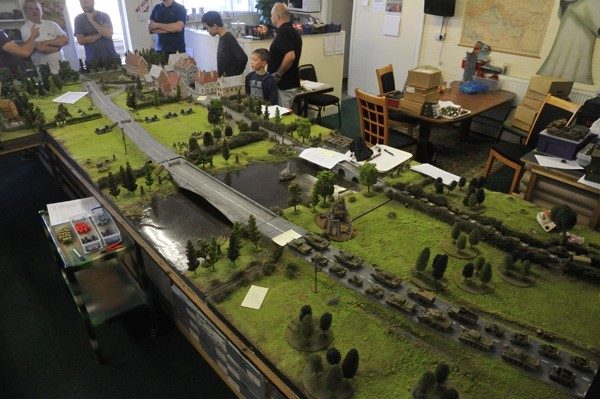
30th Corps on the starting grid. Hell’s highway to the left with country lanes on the right. Grave is to the northeast, Nijmegen hidden on the left.
30th Corps was formed up of two columns on the main highway and the side roads into Grave. Each column consisted of 12 tanks with armoured car and infantry support in a mixture of trucks and universal carriers. A prep barrage was dropped onto the German defences on the Maas river and the armoured columns roared into life. Units were issued run orders and looked to cross the bridges before enemy firing could cause a snarl up. This proved pretty effective on the first turn, with the barrage reducing enemy firing effectiveness.
From turn two selected elements of 30th Corps opened up on the enemy defensive line and the left column was able to punch through with German anti-tank fire surprisingly ineffective, as was their nebelwerfer. Once panzerfausts had been fired, German infantry was left to just watch the column racing past through a 20mmm flak gun did good work of harassing the column throughout the game. By turn four the left column had reached the southern environs of Nijmegen but then came under fire from Pak 40’s hidden in woodland as well as a Stug which had taken up an ambush position in the town.
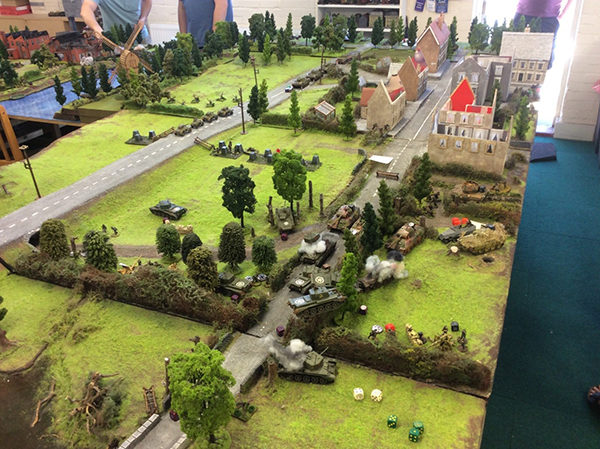
Hells Highway breakout with a bloodbath in the lanes.
The AT positions had been able to set up thanks to the street fighting in Grave. 1st Fallschirmjager was involved in fierce street fighting with the 101st, with units firing across the street at each other from occupied buildings. 1st Fallschirmjager were able to bring up artillery support and started to put the hurt on the 101st who were also outnumbered having been given too many objectives. 101st found their forces split as they simultaneously tried to interfere with 88mm AT defences on the Maas (they were prevented in this by fire from a Wirbelwind), supported the Nijmegen Waal river assault and then had to clear forest lines of Pak 40 guns. However, the fierce fighting did contain the Fallschirmjager to Grave town and they were unable to seal off completely the highway to the west.
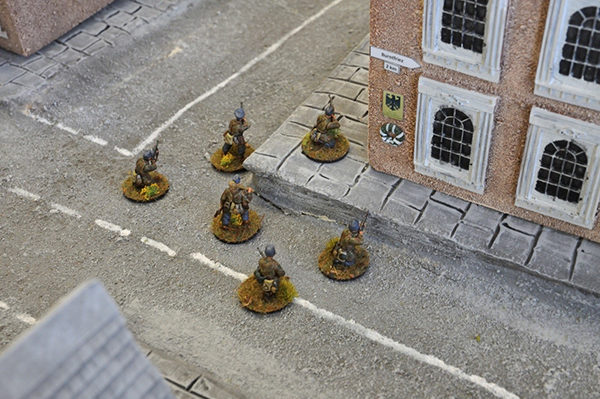
Fallschrimjager advance through Grave
The right column of 30th Corps in the meantime had run into serious trouble. Despite AT defences proving ineffective (unlucky dice rolling) only around six tanks were across the Maas bridge before 3 panthers with Panzer 107 plus AT guns on Hannomags engaged them. The narrow lane became clogged quickly in the fierce fighting. This was especially true after a Panther and Hannomag were both immobilised on the road ahead, effectively blocking it. 30th Corps lost seven tanks pinning down the enemy force here. They managed to get a firefly through to Grave but this was immediately destroyed by Fallschirmjager in cover with panzerfausts.
Two Cromwells slipped across the fields (these can be seen sneaking off in the picture above) to the highway and were able to continue the advance, but the right lane advance had become an attritional battle with the 107th. This did, however, prevent the Panthers from cutting off the highway. Just as a German breakout seemed possible (that would then have threatened the highway) an air strike was called in. This ground attack Typhoon caused enough mayhem that it allowed 30th Corps infantry (which had advanced in trucks) to, at great cost to themselves, assault German infantry, then an 88 gun before closing in on a panther and taking it out with a Piat. German LMG fire and mortars made the country lanes deadly. From turn six all 30th corps reinforcements were directed up the highway with the right flank left to fend for itself.
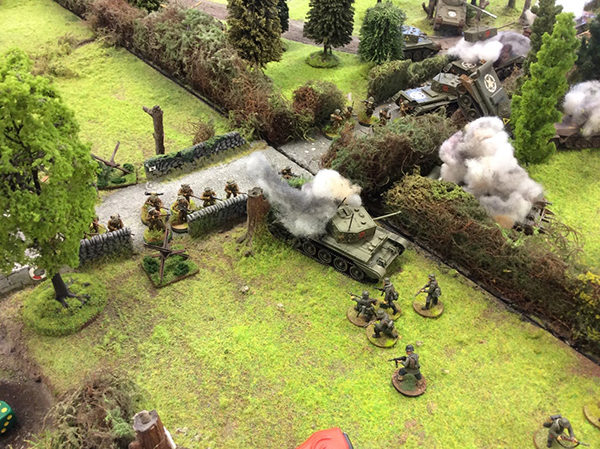
30th Corps infantry about to go “over the top” and clear out German defences.
30th Corps on the left were slowed down from turn four by having to deal with the Pak 40 ambush and fire from Grave. This delay was probably critical to the battle as 30th Corps for two turns used armoured cars and fire from Churchill tanks to suppress fire onto the columns. Realising time was now of the essence, the forces disengaged and started to race for the now open Nijmegen bridge. But this delay had surprisingly allowed two Cromwells from the right flank advance to reach the bridge first as they used the distraction caused by their comrades to race cross-country to the bridge. These were able to begin crossing the bridge from turn seven, about two turns behind schedule by our count.
Nijmegen
Crucially for 30th Corps, when they did finally arrive at the bridge over the Waal, the US 82nd had seized the bridge with a coup de main involving a river crossing in boats and an attempt to rush the bridge.
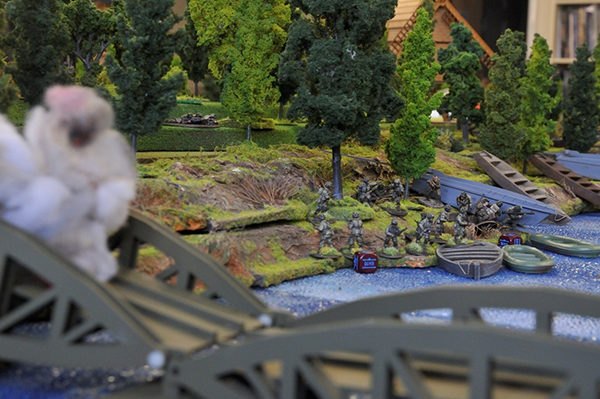
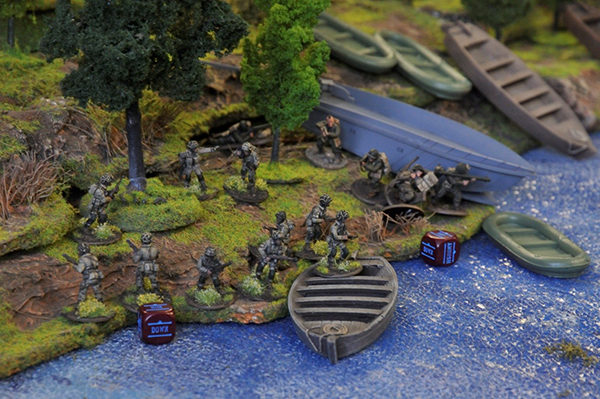
US forces under fire board boats for the river crossing
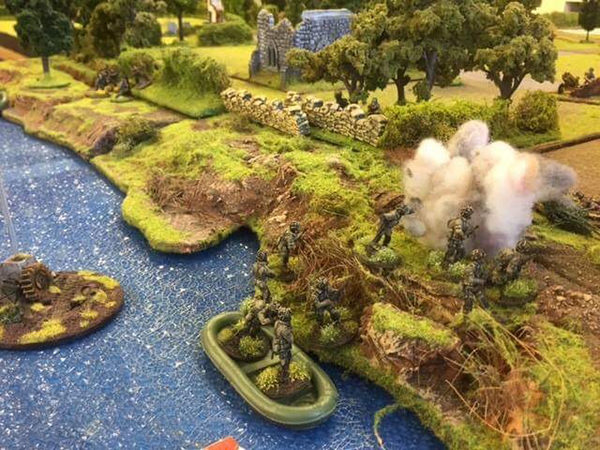
Disembarking with smoke cover
The US Airborne formation had moved quickly to the riverside and begun an assault across the river (that would take two turns to cross) into the face of very heavy German fire, including from a 20mm Quad AA gun on a building roof, from turn one. However casualties were horrific for the first two turns and the assault looked set to be a failure, with Dan having to commit more troops in the knowledge their chances were slim at best.
But then on turn three the off-board British artillery was able to shift target from supporting 30th Corps to the river assault. At the start of turn three the big guns hammered down (with a prep bombardment) onto the Frundsberg Kampfgruppe commanding the northern riverside. Whilst no units were destroyed, the sheer weight of the barrage laid enough pins on the defenders to prevent them from further interfering with the US small boats. Add to this clever use of smoke cover from US mortars and the Americans were across.
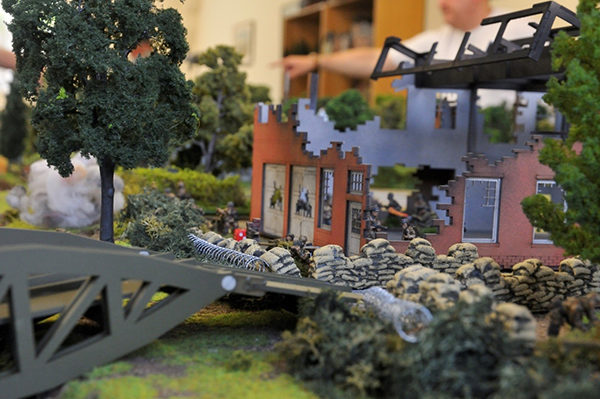
Kampfgruppe Frundsberg firing on the US 82nd from the northern riverside.
The US vets were then able to make short work of the German river line defence, with the 101st also sending reinforcements in; however fighting carried on in the town as the Germans, led by KG Hohenstaufen tried to break back into the town. Tenacious US defence and a critical air strike on the Quad autocannon meant the first elements of 30th Corps to arrive found the bridge open and not under fire. The 30th Corps were late but thanks to decisive US action (so different to actual events at Nijmegen) to grab the bridge, the way was open to Arnhem.
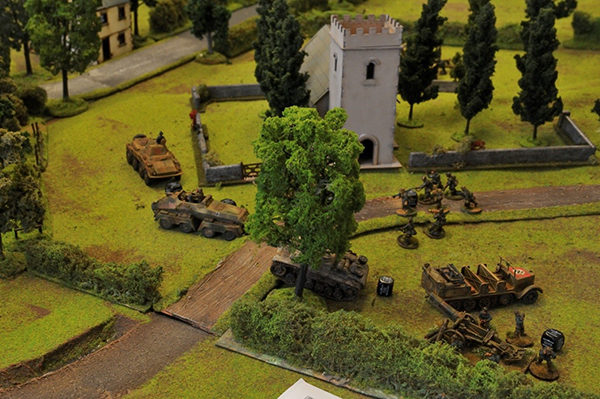
Hohenstaufen lead elements form up outside Nijmegen for the counter-attack.
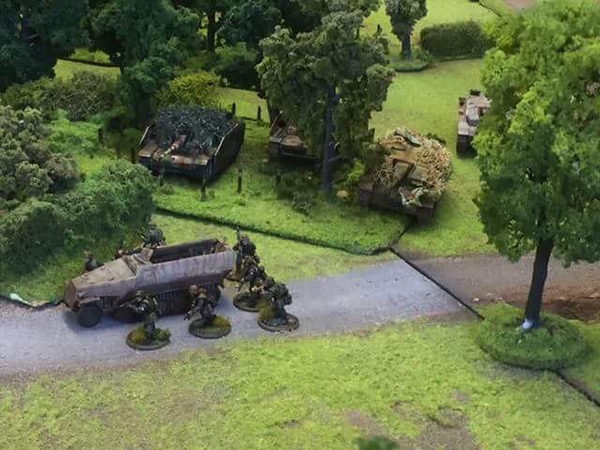
Defence forms up
Meanwhile in Arnhem
1st Para led by Johno had changed the original plan and landed to the south of the bridge, with Den to the north with 2nd Para. Both advanced as quickly as they could towards the bridge to overwhelm the weak holding force before reinforcements could arrive. This mission completed by turn four, units screening the centre advance were already coming under pressure both north and south.
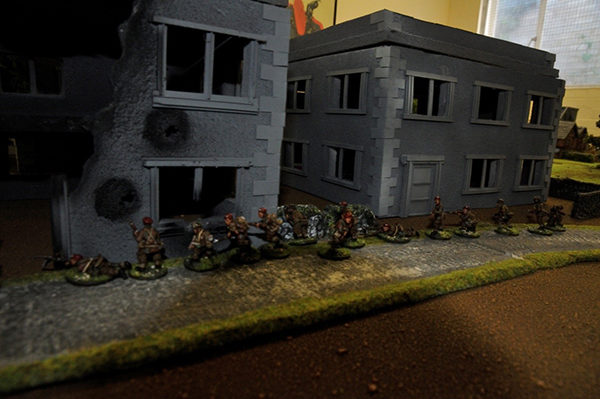
2nd Para sneaks its way to the bridge through the streets of Arnhem.
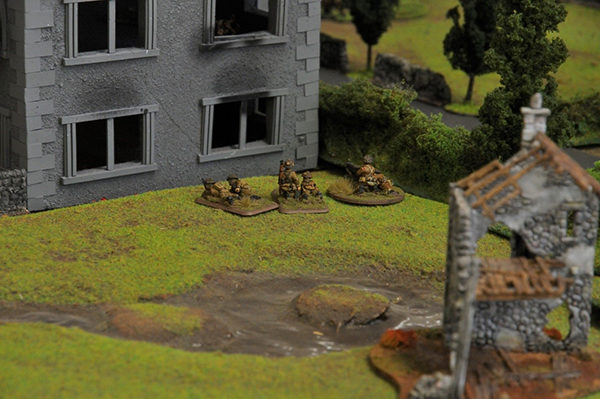
Ambushes are set up in Arnhem north.
German forces arrived soon enough and had a heavy concentration of armour to the north, whilst Graebner’s famous 9th SS recon probed from the south.
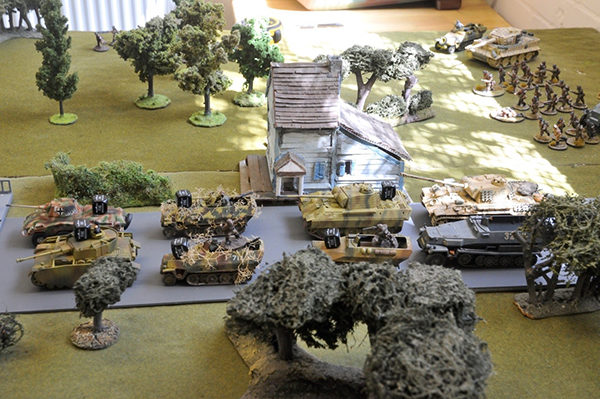
This was the main wave of German forces trying to retake Arnhem to the north.
However, the two Parachute formations, unlike their real counterparts 70 years ago, were expecting armour and so had brought as much AT as their gliders (and army list rules!) would allow. This meant the recce advance to the south was stopped completely. Deciding he would not be able to rush and take the bridge from the south, 9th SS instead sent its units to block 30th Corps when they arrived at Nijmegen.
2nd Para in the meantime faced a furious attack from the north and with well placed AT assets and assistance from 1st Para was able to cling onto the north end of the bridge, though a building was lost in the process.
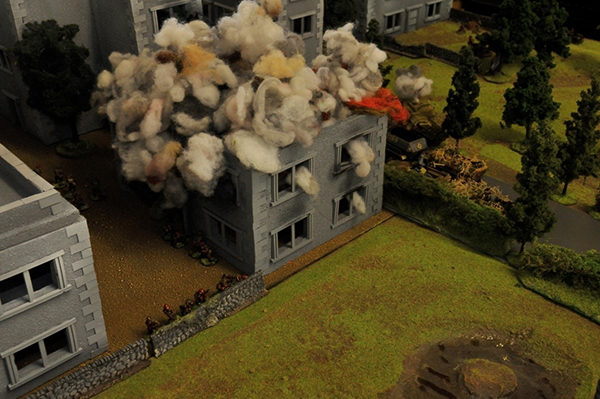
German forces from KG Von Tettau advance under fire into Arnhem past a destroyed building, whilst a section of 2nd Para watch from behind their stone wall defensive position.
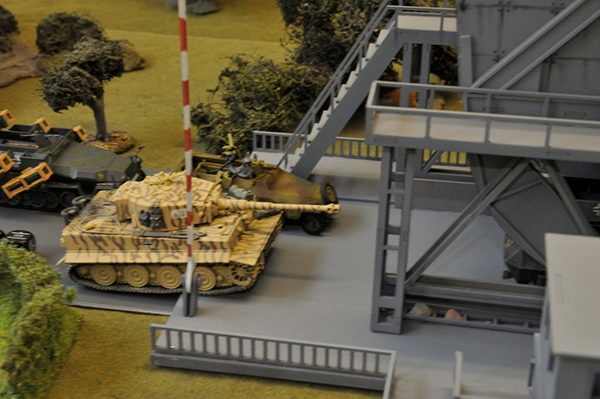
Further reinforcements arrive
Despite continued German attacks and shelling, Arnhem was held.
Turn 9 onwards
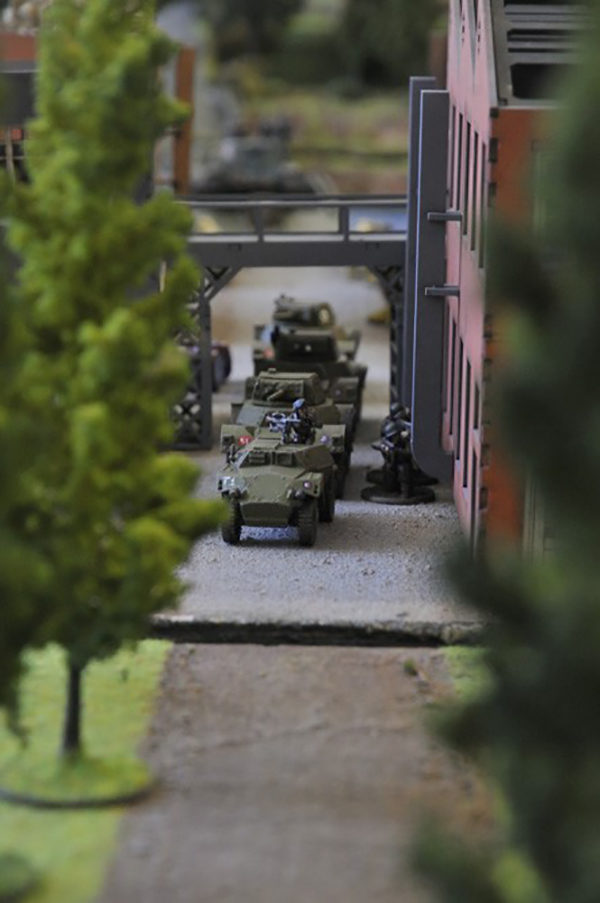
30th Corps armoured cars lead about six tanks into North Nijmegen
With 30th Corps finally arriving (though not in force) north of the Waal, the German defenders threw everything they had left at the spearhead. This was critical given the British paras had managed to hold onto Arnhem and its bridge with their tenacious defence and use of ambushes.
Hohenstaufen’s recon units caused merry mayhem but other forces had become engaged just south of Arnhem with the Polish parachute drop. This left a platoon of three Stug IIIs trying to cover the main road out of Nijmegen, with a Puma and PV IVH acting as blocking forces further north. Everything else was desperately trying to clear the Polish airborne away from the road. This was enough to prevent the 30th Corps armoured cars from moving up whilst the platoon of Churchill tanks advanced and fired trying to keep the Stugs from cutting off the road. Aggressive play by 30th Corps led to the Stug ambush petering out.
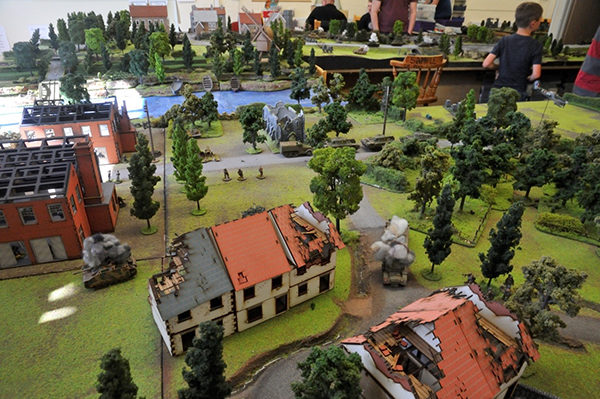
With burnt out Stugs and allied armoured cars littering the foreground, 30th Corps pushes onwards towards Arnhem
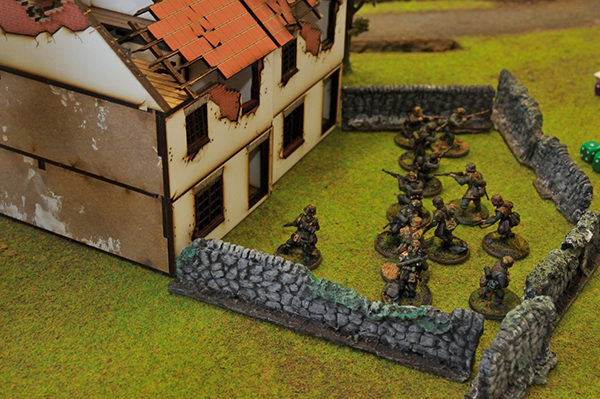
Panzer Grenadiers from 9th SS recon set up to engage Polish Paras whilst worrying about reinforcements coming from Nijmegen.
This on turn 11 gave a lone Cromwell the chance to run straight across the front of the Stugs’ guns (after their order dice had been used) and to advance up the road, into the teeth of the PZ IVH and Puma trap. This is when yet again the RAF came to the rescue with a Typhoon getting through AA defences to hit and destroy the PZ IV, also pinning the Puma. Somehow the Cromwell survived incoming shooting form AA guns which set it alight, only for the crew to manage to put out the fire.
The Cromwell tried its luck once more, running straight past the pinned Puma on the road and advancing to within easy sight of the bridge. At this point, the brave crew’s luck ran out as the German force unleashed all firepower to prevent it reaching the bridge at all costs.
Conclusion
And with that, turn twelve was done and the clock had struck 5pm, the game was over, on schedule. On review, the umpire awarded the game to the allies (with only limited grumbling) based upon the situation at the end of turn twelve. Whilst the link up had not yet happened (and in truth Paul who had designed the game had not expected a link up to be possible), the Allies had kept Hells Highway clear, held all the bridges (including Arnhem north and south) and had 30th Corps racing out of Nijmegen with little left to stop it. The route was open to Arnhem and then onwards to Germany.
Additional photos!
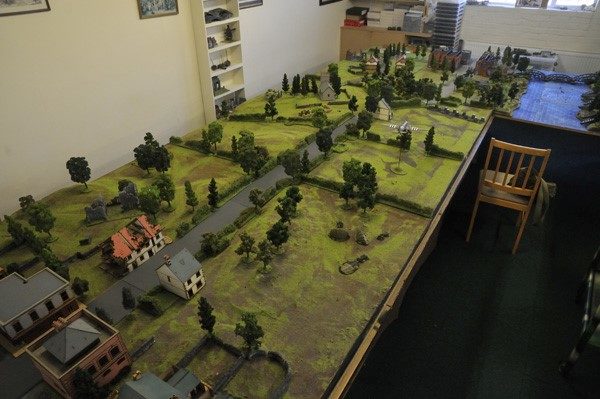
The approaches to Arnhem, with Nijmegen at the top of the board. The Cromwell reported above managed to reach the orange-roofed building before being stopped for good.
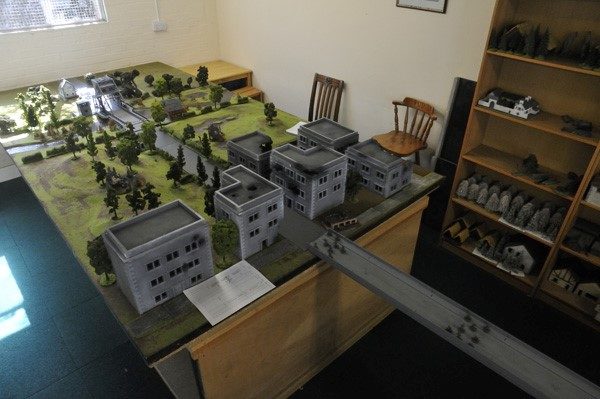
Arnhem as seen from the south, note the northern approaches from where the German counter would come.
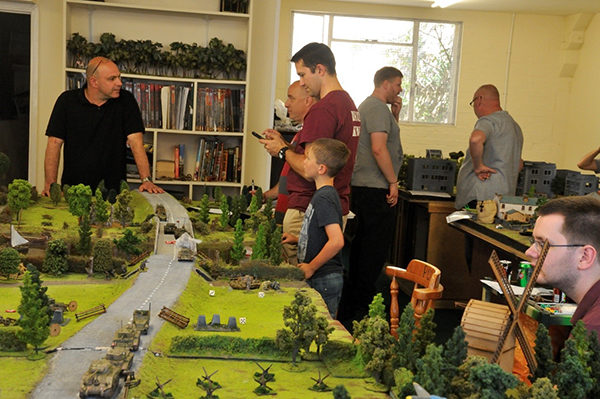
Rules check!
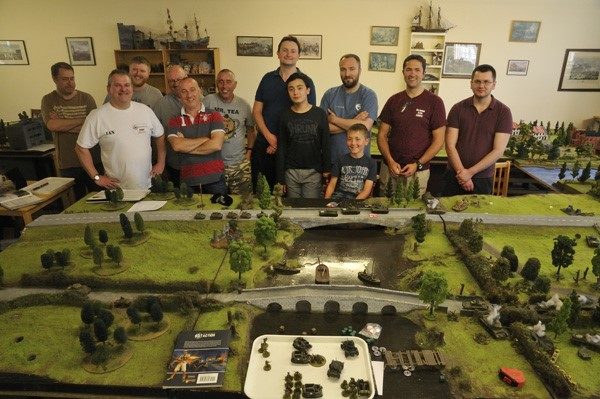
Allied victory but it was a close thing.
Pre-order Campaign Market Garden today!
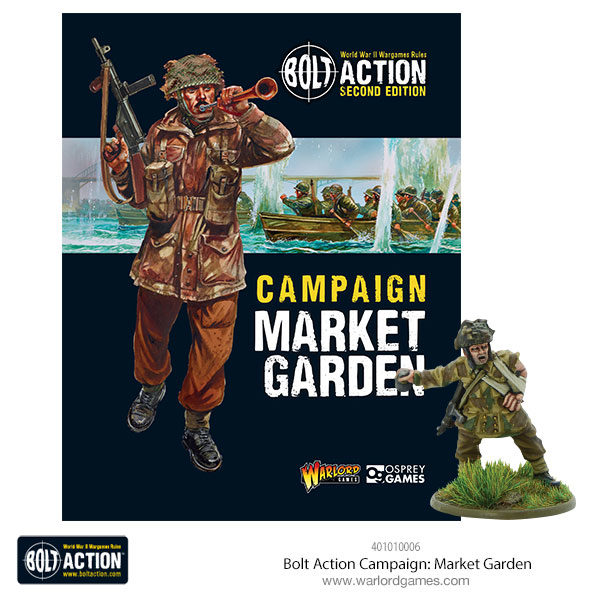
Bolt Action Campaign book: Market Garden is due in stores February 2018!

